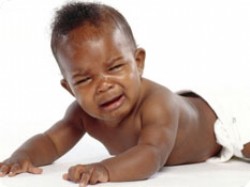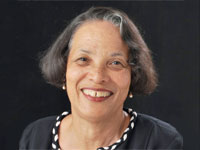
An overview of the data collected by the Department of Statistics on births in The Bahamas over the last 40 years shows that women, domestic and foreign-born, are having far fewer children.
The data in the births report, collated from 1970 through 2010, show that with a population of about 170,000 in 1970, there were 4,894 live births recorded. Juxtapose those numbers against the 5,362 live births recorded among a population of more than 340,000 in 2010, and the downward shift is apparent.
The report also shows that the birth rate fell almost 50 percent, from 28.8 births per 1,000 persons to 15.8 births per 1,000 persons from 1970 through 2010.
The conclusion: Women between the ages of 15 and 49 were having an average of four children during the course of their lives in 1970. By 2010, women were only having an average of two children.
The data do not indicate why birth rates have dropped so dramatically, but a scrutiny of the numbers does uncover some interesting trends among particular groups of women.
Births by foreign women have dropped in the past four decades, from about 30 percent in 1970 to about 18 percent in 2010.
However, an unavoidable fact – as pointed out by The Nassau Guardian several days ago – is that the birth rate among Haitian women in The Bahamas has nearly doubled in the past 40 years.
“The number of births grew from 7.2 percent in 1970, to an average of 13.7 percent by 2010,” the report noted. “In contrast, births to women of Jamaican ethnicity declined by some 50 percent. For females from countries outside the Caribbean, the numbers of births plunged, especially since 2008 to (nearly zero) from 12.1 in 1970.”
The report also points out that births to unwed mothers have practically doubled since 1970, and remain “the largest annual natural increase to the Bahamian population”.
“Births to unwed mothers in The Bahamas escalated in the past 40 years, from 29 percent in 1970 to a high of 62 percent in 2009. For the period 1990 to 2005, the annual birth trend, though high, leveled at 57 percent,” the report said. “Four years later, births to single mothers advanced by five percentage points and declined to 59 percent of the national total in 2010.”
Meantime, the birth rate among teenage mothers (ages 10-19) has dropped significantly.
In 1970 the birth rate in this group was 32.4 per 1,000 women. The birth rate in that group now stands at 17.6 per 1,000 women.
“When compared to the annual national totals the proportion of births to teen mothers fluctuated, reaching a high of 21.7 percent in 1980, to a low of 9.7 percent in 2005,” said the report.
“During the last two years, the percentage of births to females under the age of 20 dropped to single digits, indicating some degree of stability in terms of the annual number of births to this group of females.”
Females ages 15-19 had a birth rate of 40.9 in 2010, compared to 38.9 in 1970.
Women ages 20-24 had the highest birthrate in 1970, with a little over 100 births per 1,000 women. Now that group has a birth rate of 96.7 per 1,000 women and has been eclipsed by women ages 25-29, with a birth rate of 106.3 per 1,000 women.
Women ages 30-34 had a birth rate of 91.7 in 2010, compared to 54.2 in 1970.
Some women are also having children at an older age. Women ages 35-39 had a birth rate of 49 in 2010, compared to 40.8 in 1970.
However, women ages 40-44 had a birth rate of 13 in 2010, compared to 16.7 in 1970.
Women ages 45-49 were having two children per 1,000 persons 40 years ago, and that rate has now fallen to one child among that age group.
As was the case 40 years ago, most children are still born in New Providence.
“In 1970, 63.3 percent of the nation’s children were born in Nassau. Between 1970 and 1980, births in New Providence grew by more than seven percentage points, and about 11 percent by 1990. Thereafter, the proportion of births remained in the low 80 percent range, peaking at 83.9 percent in 2008,” the report found.
“Over the past four decades, the proportion of births which occurred in Grand Bahama decreased by more than four percentage points; from 20.5 to 16 in 2010.
“Forty years ago, the Family Islands accounted for 16 percent of births in the country. By 2010, these island communities experienced a significant loss of birth occurrences, from 794 births during 1970, to a record low of 17 births in 2010.”
The number of boys and girls born in The Bahamas has consistently remained almost equal for the past 40 years, with the majority number fluctuating slightly between the genders.
Most babies are still being born in August and September, although many children are also born during the months between October and January.
But for all the babies being born, there are still many who don’t make it out of their mothers’ wombs alive – though that number is decreasing.
In 1970 there were 105 stillborn children in the country. By 2010 that number decreased to 61.
Expressed as a rate, it would mean that in 1970, for every 1,000 live births there were 21.5 stillborn children.
In 2010, for every 1,000 babies born alive, 12.1 died in utero.
By Juan McCartney
Nassau Guardian Senior Reporter



